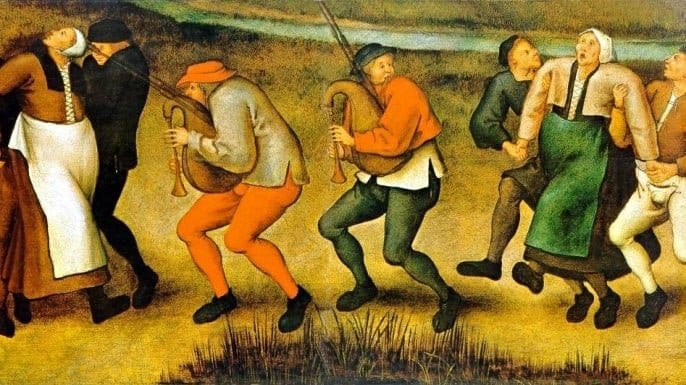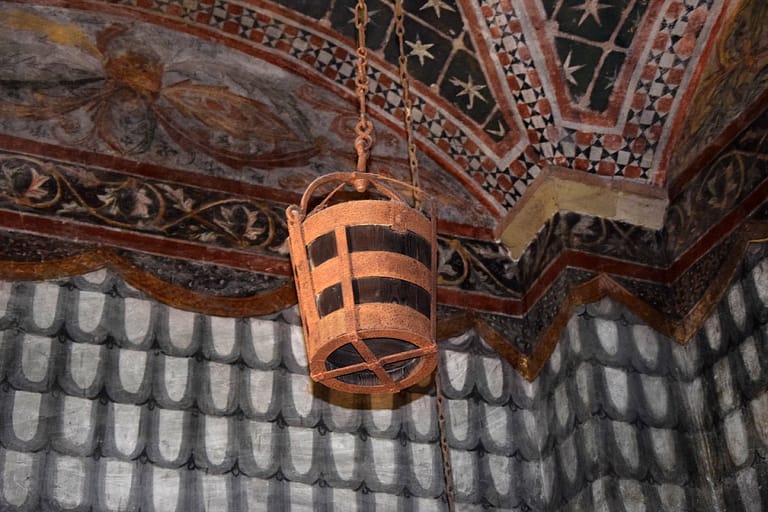History is a treasure trove of bizarre and intriguing events that often lurk in the shadows of more prominent stories. These historical oddities, although lesser-known, provide a unique window into the quirks and complexities of the past.
The Dancing Plague of 1518

In 1518, Strasbourg, France, witnessed an inexplicable phenomenon known as the Dancing Plague. It began when a woman named Frau Troffea started dancing in the streets and couldn’t stop. Within weeks, hundreds of people joined her, compelled to dance uncontrollably. This frenzied dancing continued for days, and some participants eventually danced themselves to exhaustion or death. Physicians of the time were baffled by the outbreak, and it remains a historical mystery. Theories suggest mass hysteria, food poisoning, or even the consumption of hallucinogenic substances, but no definitive explanation has been found.
The Great Emu War
In 1932, Australia declared war on emus. Farmers requested military assistance to combat emus, which were damaging their crops. The government dispatched soldiers armed with machine guns, but the emus proved surprisingly agile and difficult to hit. The war became a farcical event, with the emus seemingly winning the battle. The military eventually withdrew, and the emu problem was never fully resolved. This quirky episode serves as a humorous reminder of the unpredictable challenges faced by governments and the resilience of nature.
The Voynich Manuscript

The Voynich Manuscript is a 15th-century book filled with mysterious, undecipherable text and strange illustrations. Its contents have confounded linguists, cryptographers, and scholars for centuries. The script appears unique, and the drawings depict bizarre plants, astronomical symbols, and enigmatic human-like figures. Despite numerous attempts to crack its code, the Voynich Manuscript remains an unsolved puzzle, fueling theories of its origin, purpose, and authorship. Its mystique has made it one of the most famous and enigmatic artifacts in history.
The Great Molasses Flood

In 1919, Boston experienced an unusual disaster when a massive molasses tank burst open, unleashing a 25-foot high wave of molasses that flooded the streets at an astonishing speed. The Great Molasses Flood killed 21 people and injured 150 others. This odd catastrophe resulted from a combination of factors, including a poorly constructed tank, unseasonably warm weather, and the fermentation of molasses causing a buildup of gas pressure. The incident left a lasting impact on the city and led to changes in engineering and construction practices.
The Tanganyika Laughter Epidemic
In 1962, a strange epidemic of contagious laughter swept through a girls’ school in Tanganyika (now part of Tanzania). The laughter, accompanied by various physical symptoms, spread to neighboring villages and affected over 1,000 people, causing widespread disruption. The outbreak lasted for several months, with no clear medical explanation. Mass psychogenic illness, stress, and social factors have been proposed as possible causes, but the Tanganyika Laughter Epidemic remains a curious and largely unexplained event.
The Bearded Lady of Guildford

Julia Pastrana, born in the mid-19th century, was afflicted with hypertrichosis, a condition that caused excessive hair growth all over her body, including her face. She embraced her unique appearance and became a performer, known as the “Bearded Lady” and “The Ape Woman.” Audiences were fascinated by her unusual appearance, and she toured internationally. Tragically, after her death in childbirth in 1860, her husband had her and their infant son’s bodies mummified and continued to exhibit them for profit. Their preserved remains were showcased in various locations for years, adding a macabre and exploitative chapter to the history of curiosity exhibitions.
The Mormon Pioneer Trek
In the mid-1800s, Brigham Young led a group of Mormon pioneers on an arduous journey from Illinois to Utah, seeking religious freedom and a new homeland. Covering over 1,300 miles, the pioneers faced daunting challenges, including harsh weather, disease, and food shortages. The trek was marked by immense hardships, with some pioneers resorting to cannibalism in desperate circumstances. This epic journey exemplifies the resilience and determination of early Mormon settlers, who endured incredible hardships to establish their community in the American West.
The Parisian Bridge Auction Scam

Victor Lustig, a notorious con artist, pulled off an audacious scam in 1925 by selling the Eiffel Tower for scrap metal. Lustig convinced a group of scrap dealers that the iconic Parisian landmark had become too costly to maintain and should be dismantled. In exchange for a hefty bribe, he promised them the rights to the dismantled metal. Lustig then disappeared with their money. This elaborate con is a remarkable example of confidence trickery in history, where a swindler’s charisma and clever manipulation allowed him to deceive even the most skeptical individuals.
The War of the Bucket

The War of the Bucket, also known as the War of the Oaken Bucket, is a peculiar and somewhat humorous event in medieval history. It took place in 1325 between the rival city-states of Bologna and Modena in Italy. This conflict, rooted in the intense rivalry and political differences between the Guelphs (Bologna) and Ghibellines (Modena), was sparked by a seemingly trivial incident. According to legend, a group of Modenese soldiers stealthily entered Bologna and stole an oak bucket from a city well. This act was not just a simple theft; it was seen as a grave insult and humiliation by the Bolognese. Enraged, Bologna declared war on Modena.
The resulting conflict, despite its somewhat comical origin, was serious and led to the Battle of Zappolino. The Modenese forces, though outnumbered, emerged victorious. The bucket was triumphantly paraded through Modena and kept as a trophy. It reportedly still resides in Modena’s bell tower, the Torre della Ghirlandina, symbolizing their victory in this unusual conflict.
Centralia, Pennsylvania’s Underground Fire
In 1962, Centralia, Pennsylvania, experienced an underground coal mine fire that continues to burn today. The fire was ignited by a trash-burning incident in an abandoned mine shaft. Toxic gases and subsurface cracks made the town uninhabitable, and most residents were forced to leave. Centralia has become a modern ghost town with smoke and steam rising from fissures in the ground. This enduring disaster underscores the unintended consequences of industrial activities and the environmental challenges faced by communities when dealing with underground fires, making it a haunting chapter in the annals of industrial history.
These historical oddities are reminders that history often contains moments of the bizarre, unexplained, and inexplicable, challenging our understanding of human behavior and the world around us.

